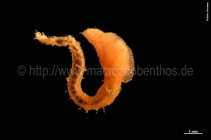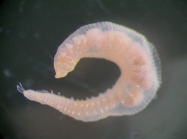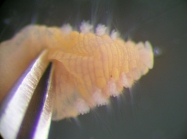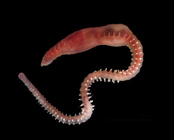RAS taxon details
Scalibregma Rathke, 1843
129555 (urn:lsid:marinespecies.org:taxname:129555)
accepted
Genus
Scalibregma inflatum Rathke, 1843 (type by monotypy)
marine, brackish, fresh, terrestrial
recent only
neuter
Rathke, H. (1843). Beiträge zur Fauna Norwegens. [Contributions to the Fauna of Norway]. <em>Nova Acta Academiae Caesareae Leopoldino-Carolinae Naturae Curiosorum, Breslau & Bonn.</em> 20: 1-264., available online at https://doi.org/10.5962/bhl.title.11613
page(s): 182-184 [details]
page(s): 182-184 [details]
Read, G.; Fauchald, K. (Ed.) (2025). World Polychaeta Database. Scalibregma Rathke, 1843. Accessed through: RAS (Eds.) (2025) Register of Antarctic Species at: https://ras.biodiversity.aq/aphia.php?p=taxdetails&id=129555 on 2025-09-12
RAS (Eds.) (2025). Register of Antarctic Species. Scalibregma Rathke, 1843. Accessed at: https://ras.biodiversity.aq/aphia.php/www.pfeil-verlag.de/04biol/www.pfeil-verlag.de/04biol/aphia.php?p=taxdetails&id=129555 on 2025-09-12
Date
action
by
original description
Rathke, H. (1843). Beiträge zur Fauna Norwegens. [Contributions to the Fauna of Norway]. <em>Nova Acta Academiae Caesareae Leopoldino-Carolinae Naturae Curiosorum, Breslau & Bonn.</em> 20: 1-264., available online at https://doi.org/10.5962/bhl.title.11613
page(s): 182-184 [details]
additional source Fauchald, K. (1977). The polychaete worms, definitions and keys to the orders, families and genera. <em>Natural History Museum of Los Angeles County: Los Angeles, CA (USA), Science Series.</em> 28:1-188., available online at http://www.vliz.be/imisdocs/publications/123110.pdf [details]
additional source Bellan, G. (2001). Polychaeta, <i>in</i>: Costello, M.J. <i>et al.</i> (Ed.) (2001). European register of marine species: a check-list of the marine species in Europe and a bibliography of guides to their identification. <em>Collection Patrimoines Naturels.</em> 50: 214-231. (look up in IMIS)
note: checklist listing [details]
additional source Day, J. H. (1967). [Sedentaria] A monograph on the Polychaeta of Southern Africa. Part 2. Sedentaria. British Museum (Natural History), London. pp. 459–842., available online at http://www.biodiversitylibrary.org/bibliography/8596 [details]
identification resource Mendes, Samuel Lucas Da Silva Delgado; Rizzo, Alexandra E.; De Paiva, Paulo Cesar. (2023). Unravelling the diversity of Scalibregma Rathke, 1843 (Annelida: 'Polychaeta': Scalibregmatidae) from southeast Brazilian coast. <em>Zootaxa.</em> 5353(5): 441-454., available online at https://mapress.com/zt/article/view/zootaxa.5353.5.3
page(s): 452; note: Key to Scalibregma species [details] Available for editors
page(s): 182-184 [details]
additional source Fauchald, K. (1977). The polychaete worms, definitions and keys to the orders, families and genera. <em>Natural History Museum of Los Angeles County: Los Angeles, CA (USA), Science Series.</em> 28:1-188., available online at http://www.vliz.be/imisdocs/publications/123110.pdf [details]
additional source Bellan, G. (2001). Polychaeta, <i>in</i>: Costello, M.J. <i>et al.</i> (Ed.) (2001). European register of marine species: a check-list of the marine species in Europe and a bibliography of guides to their identification. <em>Collection Patrimoines Naturels.</em> 50: 214-231. (look up in IMIS)
note: checklist listing [details]
additional source Day, J. H. (1967). [Sedentaria] A monograph on the Polychaeta of Southern Africa. Part 2. Sedentaria. British Museum (Natural History), London. pp. 459–842., available online at http://www.biodiversitylibrary.org/bibliography/8596 [details]
identification resource Mendes, Samuel Lucas Da Silva Delgado; Rizzo, Alexandra E.; De Paiva, Paulo Cesar. (2023). Unravelling the diversity of Scalibregma Rathke, 1843 (Annelida: 'Polychaeta': Scalibregmatidae) from southeast Brazilian coast. <em>Zootaxa.</em> 5353(5): 441-454., available online at https://mapress.com/zt/article/view/zootaxa.5353.5.3
page(s): 452; note: Key to Scalibregma species [details] Available for editors
 Present
Present  Inaccurate
Inaccurate  Introduced: alien
Introduced: alien  Containing type locality
Containing type locality



